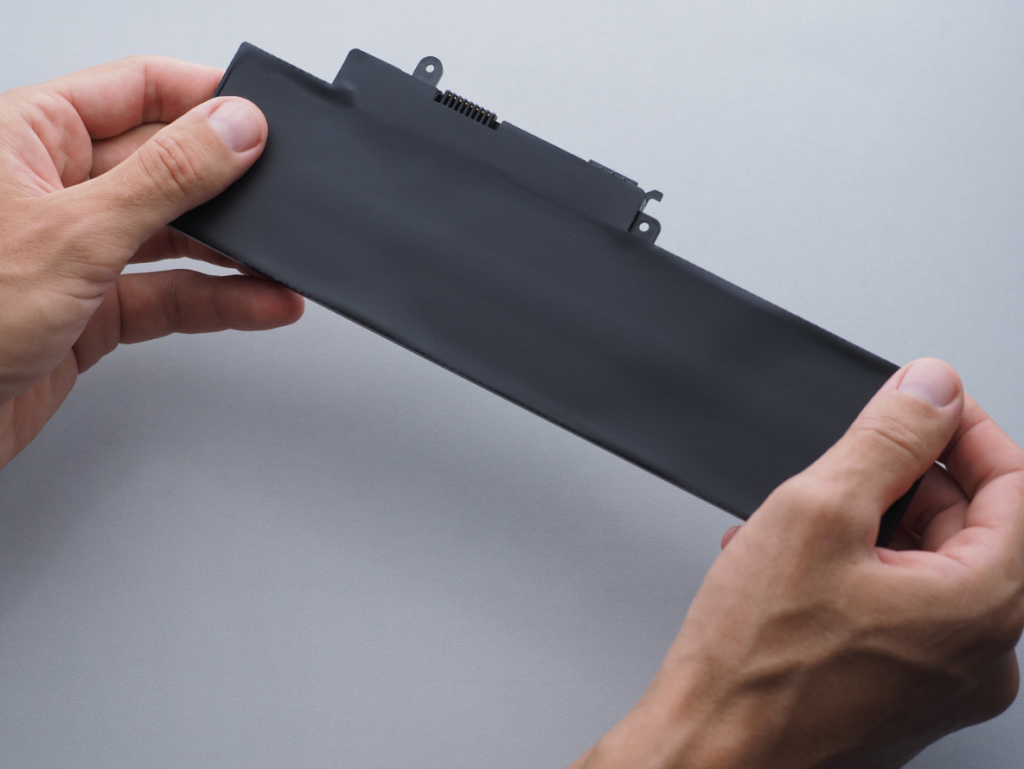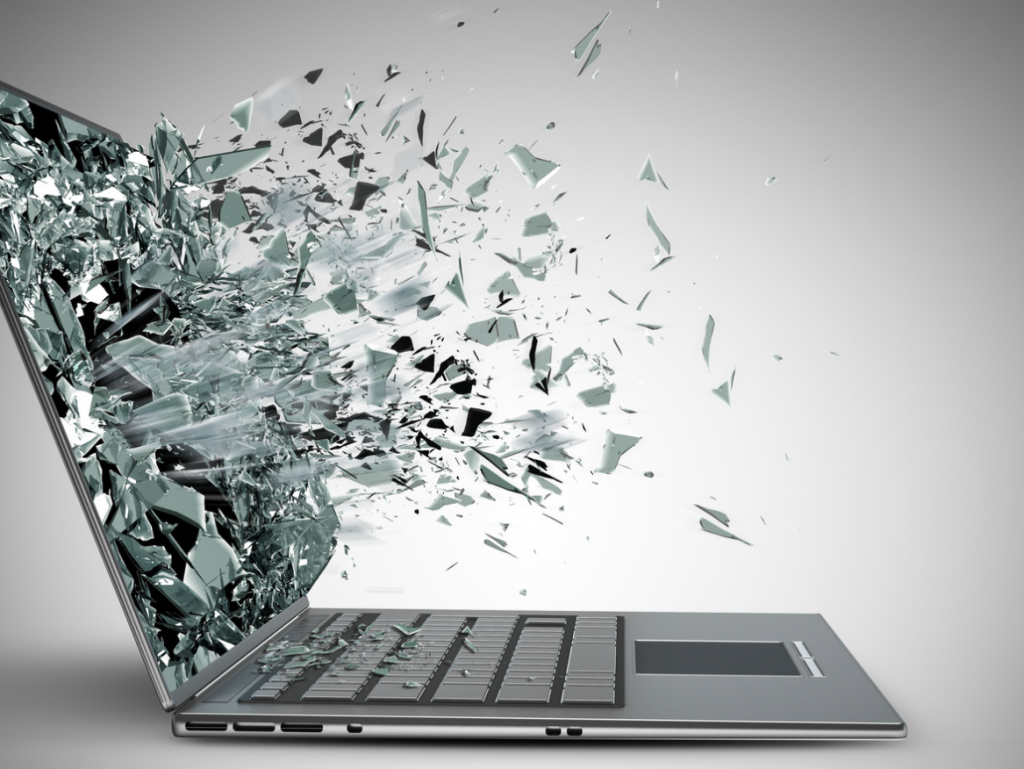It’s quite frustrating if your laptop screen isn’t working but your external monitor does!
The screen of your laptop doesn’t work but other external display does? I know exactly how you feel. Reasons for your laptop screen not working but an external monitor working include damaged graphic driver files, problems with the screen’s LCD unit, and memory modules.
What Can Cause a Laptop Screen Not to Display but External Monitor Does
The main causes of a laptop screen not working but an external monitor working are an issue with the LCD Display back light, laptop screen damage, and damaged graphics drivers.
Don’t forget to examine the brightness settings of your laptop’s screen, as well as if the battery and display cables are securely positioned in their respective compartments.

A Problem with the LCD Display’s Backlight
One of the most common causes of a laptop screen not displaying is when the light bulb in an LCD monitor burns out.
Some of the causes of the LCD display back light problem include being dropped or knocked on its screen, exposure to heat, and incorrect use in settings that create dust accumulation over time.
Laptop Screen Damage
Whether you’re sleeping with it on the bed or getting up from the chair, your laptop runs the risk of falling off.
Display problems are only one of the many potential outcomes of dropping your laptop and damaging the screen or other components.
Corrupted or Outdated Graphics Drivers
Corrupted or out-of-date graphics drivers could be the cause of your laptop screen not working.
A graphics card, often called a video card, is a piece of computer hardware specifically designed to render visual content for the screen. To resolve this issue, simply update the display driver.
Best Fixes For Laptop Screen Not Working But External Monitor Does
Do you want to know how to fix if your laptop’s screen isn’t working but an external one is? Then you’ve arrived to the right place.
Below are some of the most effective ways to deal with the issue you’re having with your laptop’s display.
Remove Battery And Power Supply
If your laptop won’t turn on after being plugged in, you can try disconnecting it from power and then removing the battery to see if it solves the problem. You may accomplish this reset by following these steps:
- Remove the power cord.
- Take out the battery.
- To remove extra static electricity, hold down the power button for 30 seconds.
- Replace the battery and reconnect the power cord.
- Start the laptop.

If this does not work, you may also try the following steps:
- To remove static electricity, turn on the power for up to 30 seconds.
- Connect the power cord to your laptop and turn it on.
Update Display Drivers
Check to see whether the graphics display driver files are outdated if you have a blank laptop screen that works well with an external monitor. If they are, the LCD unit’s functionality may be impacted.
- To get things working, I recommend that you get the latest graphics driver update. You may update the graphics card driver files on a laptop by following these steps:
- Open Device Manager by right-clicking on the Start menu button.
- Select the Display Driver Option option.
- Right-click on HD graphics and choose Update.
Perform A Hard Reset For Your Laptop
If your laptop’s screen suddenly stops working, a hard reset is often the simplest solution. To do so, first unplug the laptop from the power source. Then simply remove the battery and press the power button for more than 20 seconds to drain any latent power from your laptop.
Reinstall the battery in the laptop and connect it to a power source to restart your laptop. The screen should function normally.
Reinstall Windows Without Deleting Any Of Your Personal Files
If your laptop’s screen is not displaying, you may reset the system by reinstalling the Windows operating system. This process will not damage your personal files. Follow these procedures to reinstall Windows without losing your previously saved files:
- Hold down the Windows key and the L key to bring up the login menu.
- While holding down the Shift key, click the power button in the lower right corner of the screen.
- Windows Recovery Environment (WinRE) is enabled.
- To reset your system, choose Troubleshoot.
- To erase your personal files, uncheck the box.
Continue with the reinstallation procedure by following the prompts.
Reset Battery And Cables For Laptop Display Problem
Check the battery and display cables to see if they are properly seated in their respective compartments. When you switch on your laptop, the screen may go black due to a tiny shift in the display wire modules or the battery not seated properly in its compartment.
To begin the process of resetting the battery and wires, follow these steps:
- Turn off your laptop.
- Remove the power cord.
- Take out the battery.
- Clean the battery metal tray with a gentle cloth to remove any filth.
- Replace the battery in its container.
- Reinstall the cables by unplugging and replugging them into their respective ports.
- To test the screen, turn on your laptop.
Another approach to reset the display wires is to ensure that they are securely attached to the motherboard.
If your laptop falls, the impact may damage the display wires that transport signals from the motherboard to the screen, resulting in a blank screen.
Whether the screen isn’t showing up, check the display cords to see if they’re damaged or broken; if so, you may need to replace them.
Restart Your Laptop
Restarting the laptop is one of the simplest ways to fix a laptop screen that isn’t working, especially for Windows 8 laptops.
This easy approach also assists in the repair of any problems associated with upgrading the operating system or graphics card driver files on your laptop.

Even if you caused harm to your system when installing new software or drivers, a simple restart should resolve any conflicts you’re experiencing. Check the monitor’s functionality after restarting your laptop.
Connect Laptop With External Monitor To Test The Display
Connecting your laptop to an external monitor is a simple approach to see whether there is an issue with the screen. You may accomplish this by connecting a VGA, HDMI, DVI, or any other accessible display cable.
In the event that you find that your laptop is functioning normally except for the screen, this test procedure might be of assistance. Follow these steps to connect your laptop to an external monitor:
- Connect your laptop’s display wire to the external display device.
- If the external monitor remains blank until it displays the Startup logo, press F4.
If the external monitor works properly, you know there is a problem with your laptop screen. You can determine whether the problem is due to a faulty LCD panel or corrupted graphic drivers.
Reset The Memory Modules
If there is a problem with the memory modules, the laptop screen may not display anything.
It might be caused by any of the memory modules failing to make proper contact with the motherboard.
To reset the laptop’s memory modules, perform the following steps:
- Turn off your laptop.
- Remove the power connection.
- Remove your laptop’s rear cover to gain access to the memory modules.
- Remove the memory modules and reinsert them into the same place.
Plugging in the power cord will activate the laptop’s display, allowing you to check its functionality.
Reset Your Display Mode
It is possible to completely turn off the screen on some laptop models by adjusting the brightness settings.
In order to fix the issue, it may be as easy as adjusting the brightness settings to return your laptop screen back to its usual appearance.
Contact Your Retailer If Your Laptop Is Under Warranty
If you have exhausted all of the above options, please contact your retailer. It would be ideal if the laptop was still covered under warranty.
Contacting them will assist you in determining any additional fees for having the laptop screen repaired.

FAQs
What Can Cause a Laptop Screen Not to Display but External Monitor Does?
It could be caused by damaged graphic driver files, a burnt LCD bulb, or a broken screen from a heavy fall.
Why My Laptop Is On But Not Displaying Anything On The Screen?
Possible causes include a broken laptop screen or an out-of-date version of the necessary graphics driver files.
Conclusion
What if an external display is working, but the laptop’s monitor is not? You should be able to use one of the methods listed below to resolve the difficulty you were having, and I hope that this article was helpful in doing so.





![12 Best Hidden Spy Apps for Android [Free & Paid]](https://theviraltech.com/wp-content/themes/rehub-theme/images/default/noimage_336_220.png)

